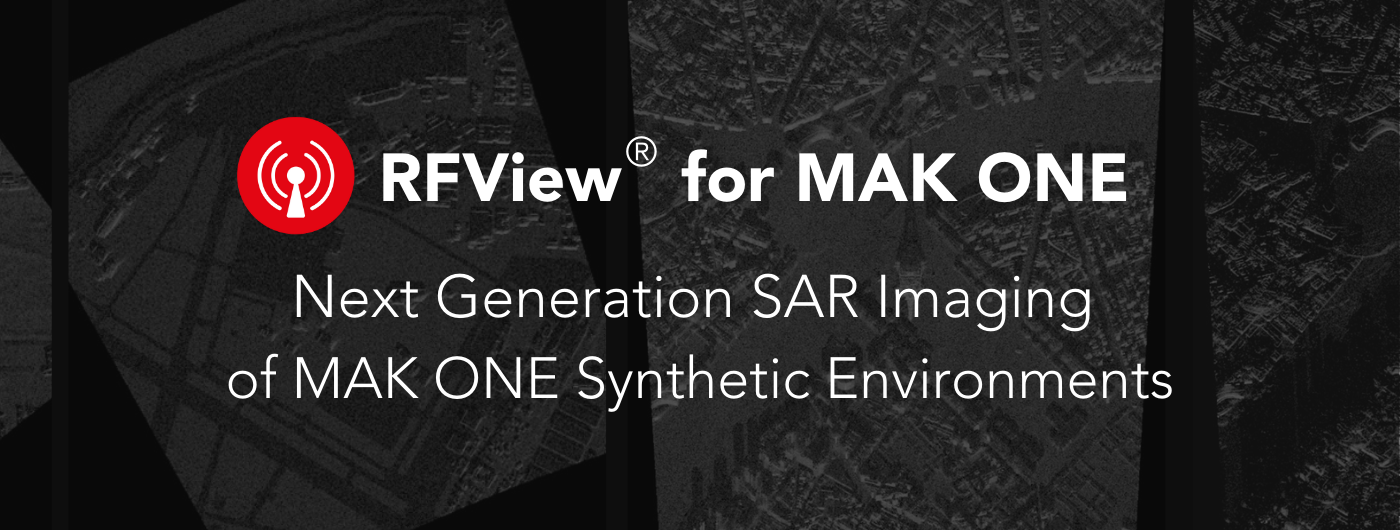
Introducing RFView® for MAK ONE
Real-time Ray Tracing Technology to Generate Accurate Radar Images of MAK ONE Simulation Environments
Synthetic Aperture Radar (SAR) imaging has become an indispensable tool for today’s modern militaries. This creates a critical requirement for modeling and simulation engines and platforms to generate simulated SAR images that are both physically accurate and fully correlated with out-the-window views and EO/IR images of your virtual world.



At I/ITSEC 2024, MAK Technologies is proud to announce RFView® for MAK ONE – the newest addition to the MAK ONE product ecosystem! RFView for MAK ONE acts as a SAR server - generating and delivering simulated SAR images of MAK ONE synthetic environments based on requests from client applications through an API or network interface. The product uses real-time GPU-based ray tracing techniques to produce believable physics-based results, with the natural characteristics found in real SAR images, including Gibbs ringing effects, foreshortening and layover of tall objects, SAR shadows, smearing and displacement of moving objects, speckle, jammer/repeater artifacts, and important multi-bounce effects that can’t be achieved with other approaches.
RFView for MAK ONE was jointly developed by MAK and our new partner ISL – an industry leader in radar and radio frequency simulation and analysis for over four decades. Our new integrated product uses ISL’s RFView radar simulation technology to generate SAR images based on terrain and entity geometry and material data provided at run-time by a dedicated instance of MAK’s VR-Vantage IG. This approach allows RFView to access terrain in any of the formats supported by MAK ONE (including direct-from-source streaming from VR-TheWorld Server, procedural terrain generation, cut-in FBX or OpenFlight insets, CDB databases, and dynamic terrain elements); and to access entity geometry (including articulated parts, embarkation, damage, and DI-Guy posture and animations) - provided by VR-Vantage based on DIS/HLA data received from VR-Forces or other federates.
The images below show correlated views of the Eiffel tower area in Paris (part of MAK’s VR-World Server global database): A VR-Vantage out-the-window, and two correlated SAR images generated from different altitudes by RFView for MAK ONE. For a live demo or further information, come visit us at I/ITSEC (booth #1213), or contact





RFView® is a registered trademark of ISL, Inc.

